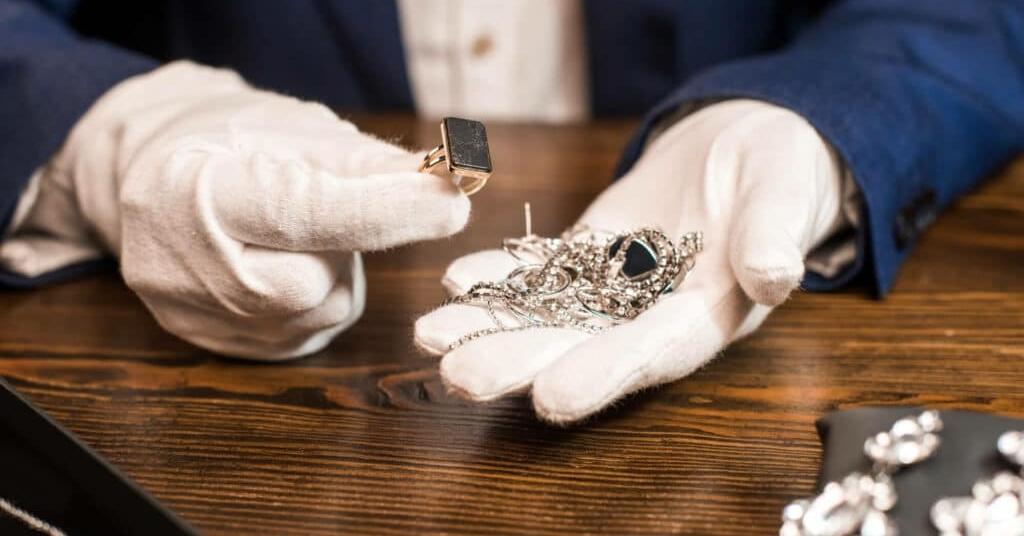In the world of pawnshops, jewelry holds a unique allure. Precious gems, sparkling diamonds, and intricate designs make jewelry valuable and emotionally significant to their owners. For individuals seeking financial relief, jewelry pawn shops provide a lifeline, allowing them to temporarily part with their cherished pieces in exchange for a loan. This article delves into the intriguing process of jewelry pawn shop valuation, shedding light on how these establishments assess the worth of these prized possessions.
Visual Inspection
Pawn shop for jewelry begins the valuation process with a visual inspection. The expert appraiser carefully examines the item to determine its overall condition, craftsmanship, and aesthetic appeal. They look for signs of wear and tear, scratches, missing stones, or any other imperfections that might affect its value. This initial evaluation sets the stage for a more detailed appraisal.
Testing for Authenticity
Ensuring the authenticity of jewelry items is paramount in the pawn shop valuation. Appraisers use various methods to verify the materials and gems used in each piece. For instance, they may use a jeweler’s loupe to examine markings or engravings that indicate the metal’s purity and origin. Additionally, gemstones are scrutinized using specialized tools to confirm their identity and quality.
Weighing Precious Metals
A crucial aspect of valuing jewelry is determining the weight of precious metals in the piece. Gold, silver, platinum, and other metals contribute significantly to an item’s worth. Pawn shop appraisers employ precision scales to measure the exact weight, which is then factored into the overall valuation.
Gemstone Evaluation
The appraisal process also involves meticulously evaluating any gemstones adorning the jewelry. Diamonds, sapphires, emeralds, and other precious gems are assessed for their carat weight, color, cut, and clarity. Each of these factors contributes to the gem’s market value. The appraiser considers the individual gem’s characteristics and their combined impact on the piece’s overall worth.
Market Trends and Demand
Pawn shop appraisers are not solely reliant on technical assessments. Furthermore, pawn shop appraisers consider the prevailing market trends and the demand for particular jewelry styles and designs. A piece of jewelry that aligns with current fashion trends may fetch a higher price than an outdated style, even if the materials and craftsmanship are similar. Appraisers stay attuned to these fluctuations to offer fair and competitive valuations.
Applying Fair Market Value
With all the information gathered through visual inspection, authenticity checks, metal weighing, and gemstone evaluation, pawn shop appraisers arrive at an estimated fair market value for the jewelry item. This valuation considers factors such as the current market prices for precious metals and gemstones and the piece’s overall condition and desirability.
Negotiating the Loan Amount
Once the pawn shop appraiser has determined the fair market value of the jewelry, they can then negotiate the loan amount with the customer. Typically, pawn shops offer loans based on a percentage of the jewelry’s estimated value. The specific terms and interest rates may vary from shop to shop. Still, the goal is to provide a mutually beneficial agreement that meets the customer’s financial needs while ensuring the shop’s profitability.
Securing the Pawn Loan
If both the customer and the pawn shop agree on the loan terms, the customer leaves their jewelry item with the shop as collateral, and they receive the agreed-upon loan amount. The pawn shop securely stores the jewelry item until the customer repays the loan, including any accrued interest, at which point they regain ownership of their cherished piece.
Selling Unredeemed Jewelry
Sometimes, customers may need help to repay their pawn loans within the specified timeframe. When this happens, the jewelry item becomes the property of the pawn shop, which can then offer it for sale to the public. These items are often displayed in the shop for prospective buyers, allowing the pawn shop to recoup the loan amount and potentially make a profit.
Conclusion
The process of jewelry pawn shop valuation is multi-faceted. It involves the technical assessment of materials and gemstones and understanding market trends and customer needs. By offering fair and competitive valuations, pawn shops provide a valuable service to individuals needing short-term financial assistance while safeguarding the precious items entrusted to their care. This intricate process ensures that the pawn shop and its customers benefit from their transactions, making it a cornerstone of the pawn industry.

